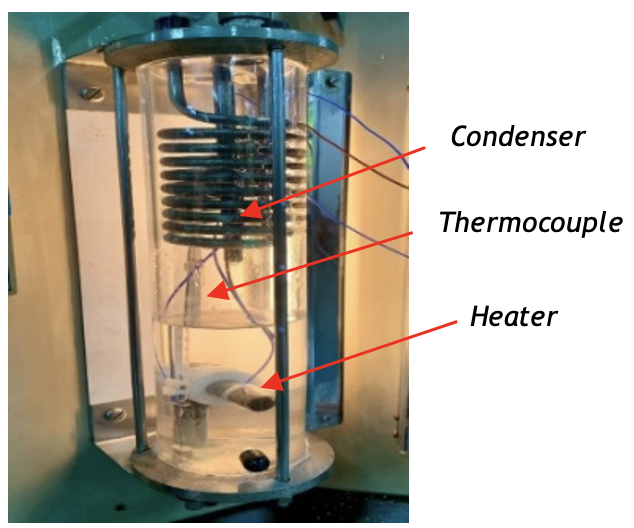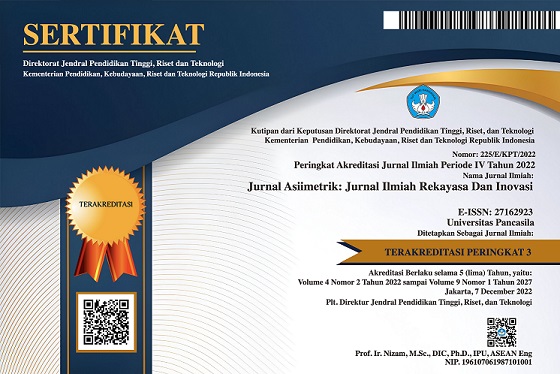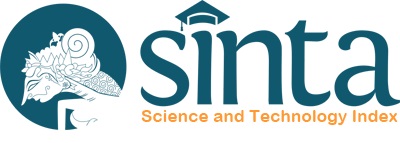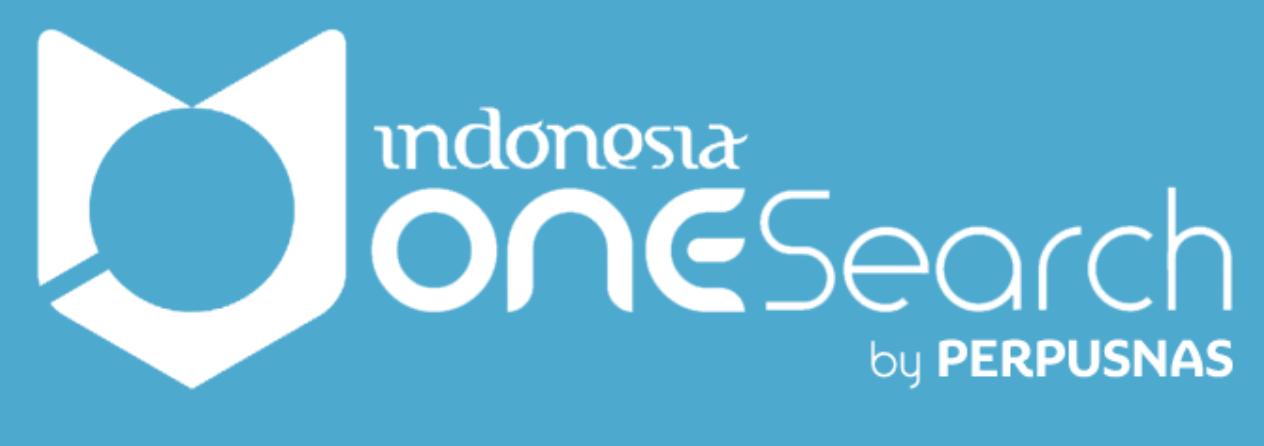The Effect of Heat Flux on the Frequency of Bubble Appearance in a Boiling Pool
DOI:
https://doi.org/10.35814/asiimetrik.v6i1.4812Keywords:
pool boiling, heat flux, two-phase flow, bubbleAbstract
This research was conducted to determine the effect of heat flux on the frequency of bubbles appearing in boiling ponds. All fluid movement in pool boiling is caused by natural convection currents. The boiling pool consists of four areas of the pool boiling regime. The division of the four areas is based on the value of the heat flux and the difference between the surface temperature of the heater and the fluid. Using a two-phase heat transfer unit (H654 P.A. Hilton machine), The results showed that the power used greatly influences the boiling process, and besides that, the volume of water used also affects the duration of the boiling process. Based on tests using various power levels of 75 W, 110 W, 168 W, 237.5 W, and 290 W. The occurrence of bubbles will be faster and more numerous when using a lower volume of water and greater power. The heat transfer will be greater if a bubble appears, where latent heat plays a very important role. With mathematical analysis, an increase of 1 bubble per minute occurs for every increase in heat flux of 1.3 W/m2.
Downloads
References
Ayoobi, A. et al. (2019) ‘Experimental study of the time period of continued heating rate on the pool boiling characteristics of saturated water’, International Journal of Heat and Mass Transfer, 137, pp. 318–327.
Benjamin, R.J. and Balakrishnan, A.R. (1996) ‘Nucleate pool boiling heat transfer of pure liquids at low to moderate heat fluxes’, International Journal of Heat and Mass Transfer, 39(12), pp. 2495–2504.
Bergman, T.L. (2011) Fundamentals of Heat and Mass Transfer. John Wiley & Sons [Print].
Çengel, Y.A. (2002) Heat Transfer: A Practical Approach. McGraw-Hill [Print].
Chu, H. et al. (2023) ‘Progress in enhanced pool boiling heat transfer on macro- and micro-structured surfaces’, International Journal of Heat and Mass Transfer, 200, p. 123530.
Chuang, T.J., Chang, Y.H. and Ferng, Y.M. (2019) ‘Investigating effects of heating orientations on nucleate boiling heat transfer, bubble dynamics, and wall heat flux partition boiling model for pool boiling’, Applied Thermal Engineering, 163, p. 114358.
Derewnicki, K.P. (1985) ‘Experimental studies of heat transfer and vapour formation in fast transient boiling’, International Journal of Heat and Mass Transfer, 28(11), pp. 2085–2092.
Guichet, V., Almahmoud, S. and Jouhara, H. (2019) ‘Nucleate pool boiling heat transfer in wickless heat pipes (two-phase closed thermosyphons): A critical review of correlations’, Thermal Science and Engineering Progress, 13, p. 100384.
Holman, J.P. (1990) Heat Transfer. 7th edn. New York: McGraw-Hill [Print].
Jones, B.J., McHale, J.P. and Garimella, S.V. (2009) ‘The Influence of Surface Roughness on Nucleate Pool Boiling Heat Transfer’, Journal of Heat Transfer, 131(121009).
Kaniowski, R. and Pastuszko, R. (2021) ‘Pool Boiling of Water on Surfaces with Open Microchannels’, Energies, 14(11), p. 3062.
Ma, Y., Huang, C. and Wang, X. (2021) ‘Experimental investigation on boiling heat transfer enhanced by gradient aperture porous copper’, Applied Thermal Engineering, 191, p. 116877.
Mehralizadeh, A., Shabanian, S.R. and Bakeri, G. (2020) ‘Effect of modified surfaces on bubble dynamics and pool boiling heat transfer enhancement: A review’, Thermal Science and Engineering Progress, 15, p. 100451.
Pioro, I.L., Rohsenow, W. and Doerffer, S.S. (2004) ‘Nucleate pool-boiling heat transfer. I: review of parametric effects of boiling surface’, International Journal of Heat and Mass Transfer, 47(23), pp. 5033–5044.
Prasetya, S. (2011) Analisa koefisien perpindahan kalor eksperimen untuk aliran evaporasi dua fasa pada kanal mini horizontal dengan refrigeran R22. Skripsi. Fakultas Teknik, Universitas Indonesia. Available at: https://lib.ui.ac.id/detail?id=20295510&lokasi=lokal (Accessed: 7 January 2024).
Prayudha, Y.W.P., Fadhil, S. and Novianto, S. (2022) ‘Rancang Bangun Sistem Pengukuran Alat Thermobath sebagai Alat Kalibrasi Temperatur dengan Sistem Arduino Uno’, Jurnal Asiimetrik: Jurnal Ilmiah Rekayasa dan Inovasi, 4(1), pp. 25–34.
Rohsenow, W.M. (2022) ‘A Method of Correlating Heat-Transfer Data for Surface Boiling of Liquids’, Transactions of the American Society of Mechanical Engineers, 74(6), pp. 969–975.
Stojanović, A.D. et al. (2022) ‘Nucleate pool boiling heat transfer: Review of models and bubble dynamics parameters’, Thermal Science, 26(1 Part A), pp. 157–174.
Zhao, Z. et al. (2020) ‘Visualization-based nucleate pool boiling heat transfer enhancement on different sizes of square micropillar array surfaces’, Experimental Thermal and Fluid Science, 119, p. 110212.





























